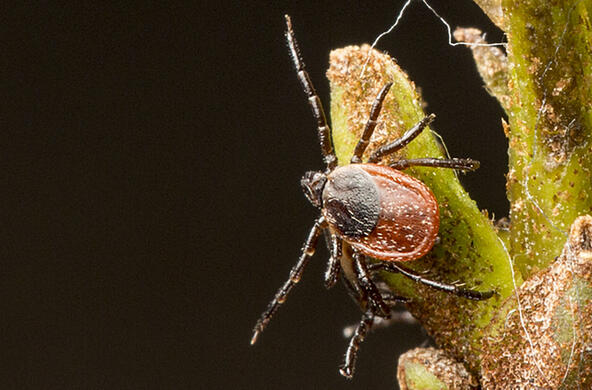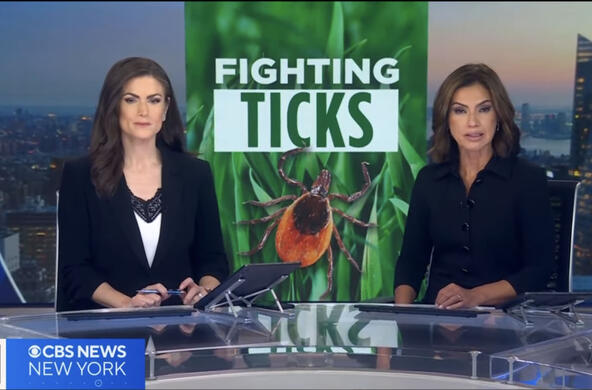The Cary Institute has embarked on an ambitious study that will test environmental interventions with the potential to reduce tick-borne disease in neighborhoods. The goal: to lower Lyme disease rates and protect public health.
Each year, more than 325,000 people are infected with Lyme disease in the U.S., and this number continues to rise. Climate change is allowing ticks to expand their range, while suburbanization and forest fragmentation are creating ecological conditions that favor the rodents that amplify tick-borne disease. This perfect storm is fueling a growing public health threat.
In the Northeast, the blacklegged ticks that spread Lyme disease can also transmit babesiosis, anaplasmosis, and Borrelia miyamotoi. Co-infections are common, complicating diagnosis and treatment. Johns Hopkins University estimates that Lyme disease alone costs the U.S. healthcare system $1.3 billion annually.
The Cary Institute is home to the world’s longest running study on the ecology of Lyme disease. Insights from 25 years of discovery are being harnessed to inform The Tick Project, a five-year study testing tick-killing interventions that hold the promise of keeping communities safe.
A $5 million dollar grant from the Steven & Alexandra Cohen Foundation launched the project, which is being led by Cary Institute disease ecologist Rick Ostfeld and Bard College biologist Felicia Keesing, in partnership with the Centers for Disease Control and Prevention, the NYS Department of Health, and the Dutchess County Department of Behavioral and Community Health.
Ostfeld comments, “Applying our science to public health protection is a professional goal, but it’s also personal. Seeing family, friends, and neighbors suffer from tick-borne diseases is a powerful motivator. We finally have the resources needed to turn our scientific knowledge into preventative actions.”
The study is taking place in Dutchess County, NY, home to one of the nation’s highest Lyme disease infection rates. It will test whether two anti-tick interventions, used separately or together, can reduce Lyme disease in neighborhoods. Interventions will target feeding and questing ticks, with a focus on reducing ticks in a way that is safe for people, pets, and the environment.
Residents of twenty-four Dutchess County neighborhoods identified as Lyme disease hotspots are currently being recruited; more than 2,000 households will be part of the study. Thanks to the efforts of The Tick Project’s field crew, more than 1,100 have already enrolled and baseline survey work is underway.
Tick-killing interventions will be deployed in 2017. They consist of two commercially available products: a small bait box that applies a low dose of the insecticide fipronil to rodents, and a vegetation spray derived from a tick-killing fungus that occurs naturally in forest soils throughout the northeastern U.S.
Research will be conducted in a randomized, placebo-controlled study, the scientific gold standard. If successful, interventions will revolutionize the fight against tick-borne illness by providing an effective prevention method.
To learn more, including how you can make a tax-deductible gift, visit:








